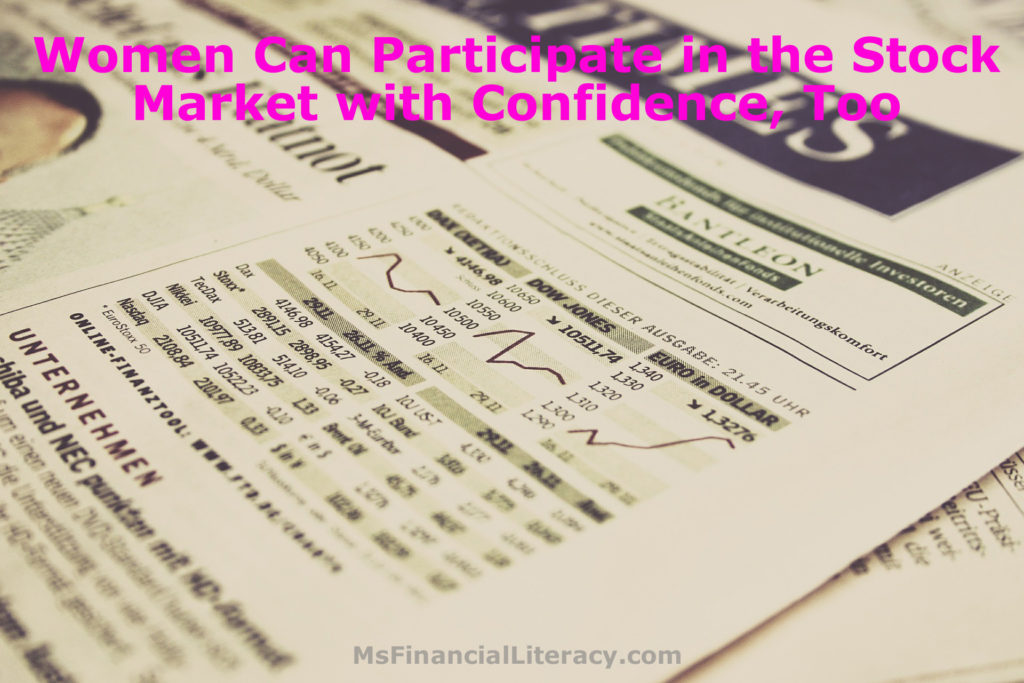
Polls and surveys consistently showed women tend to worry more about making investment mistakes than our male counterparts do and get bogged down in all the financial jargons and end up completely confused. We’re also more likely to think the stock market is too risky. All this boils down to women’s lack of confidence and lack of knowledge when it comes to investing. In this post, I share a simple strategy that helped me make sense of the stock market. Despite the strategy’s simplified approach, it gave me the motivation and confidence I needed to get into the stock market. I hope you’ll find my story inspiring, and I encourage you to give the stock market a(nother) chance. I also challenge you to rethink some of your misconceptions about men and women. This is especially important when many women believe that men are more knowledgeable when it comes to making investment decisions, more assertive and more risk-tolerant.
When I Shop
For years, I’ve been using the unit price comparison strategy when I shop. This was something my mother taught me when we were still living in China. During my first couple years in the U.S., navigating through the grocery market was overwhelming. However, understanding numbers and being able to do simple arithmetic helped tremendously. I had no problem figuring out how much an item costs per pound, ounce or gram, square foot or meter, etc. As my English vocabulary grew, I found myself comparing unit prices while keeping in mind the ingredients list. It made sense to me that a product has almonds listed as the first ingredient charges a higher price than another product that listed almonds as the third ingredient. Once I mastered this strategy, look-alike products (and of various sizes) on rows and rows of shelves no longer intimidate me.
Women as Shoppers
As a gender, women are being praised for being good shoppers. And for many of us, we know that’s true and we own this identity. We instinctively know that $3 off a $6 sandwich is a great deal. When the math gets a little complicated, we use the trusty calculator on our phones for assistance. The calculator also makes doing price comparisons easy when unit prices aren’t readily displayed. In general, it’s safe to say that we, women, carry an air of confidence with us while shopping for groceries, household items, clothing or services. So, why do so many women feel intimidated when it comes to shopping in the stock market? Buying stocks is just another form of purchase, right?
Making Sense of the Stock Market
In year 2009 when Mr. FL introduced me to the stock market, I struggled making sense of it. It was not like anything I knew (so I thought). As I was trying to figure out how to think about the stock market, I asked Mr. FL to give me some associations (I’m a visual learner and learn best by seeing/visualizing connections). One evening as we were shopping at a grocery store, deciding which humus to buy, Mr. FL had a genius thought. Being fully aware of the way I shop, he shared with me that just like unit price comparison helps consumers identify which products offer better values, there are value metrics investors can use to assess if a stock is a good purchase. Those metrics are known as value indicators or valuation ratios. They are windows into the financial health of a publicly traded company or fund. If a company or fund can demonstrate healthy financial and operational data, then it’s likely to grow its share price and/or dividends over time. And the way investors make money in the stock market is through either increases in a stock’s share price or dividend/interest payments or both.
That evening, I couldn’t wait to get home and start learning those metrics. Of course, knowing what I know nowadays, participating in the stock market is so much more complex than that analogy (e.g., need to take investor psychology into consideration). However, viewing the stock market the way Mr. FL suggested gave me the motivation I needed to dive deep into the learning process. In addition, that idea gave me the confidence that I, too, can become a better investor if I do my homework before making a stock purchase.
You can see a list of the commonly used valuation metrics here, here, here and here. Some favorites in our household are Price-to-Earnings ratio (P/E), Price-to-Book ratio (P/B), Free Cash Flow to Short-Term Debt, Price-to-Earnings Growth (PEG) and Debt-to-Equity ratio. All the nominators (top number on the ratio) and denominators (bottom number) are available on a company financial summary reports, which are easily accessible on Yahoo Finance or Morningstar. You can visit the above links to read about how those ratios are calculated. Once I acquired a basic understanding of value metrics, I began to realize that participating in the stock market is something I can do and do well in if I put in the efforts.
If you’re thinking that the metrics are intimidating, I feel you. Not only are they intimidating, some are mouthful, too! For months, it was like learning a new language for me. I kept asking Mr. FL to repeat the nominators and denominators or remind me what they are during conversations. Despite the challenge, I was determined to learn. I devoured the reading materials available on the Internet and in books and asked Mr. FL to provide real life examples. I did this until the metrics and math made sense to me and are drilled into my head. And even after that, I went through many rounds of practice using some of the stocks we owned. Putting this new knowledge into practice helped me understand why certain stocks performed better and others worse than what we speculated at time of purchase. While Mr. FL looked at many of the value metrics prior to making a purchase, there were still some he wasn’t aware of. For instance, he didn’t know about the owner earnings until I brought it to his attention.
The learning process was intense and applying the ratios one by one to assess a stock was time consuming. However, it was manageable. Real learning takes diligence, patience and practice. For those of you who don’t know like math, luckily, you don’t need to do the math. The ratios are available on the Internet. All you need to do is learn what the metrics can tell you about a stock and how to make sense of the numbers. For instance, you want to find out what range makes up a good P/E ratio. While the Internet is a great resource, I recommend also reading “The Bogleheads’ Guide to Investing” and “The Intelligent Investor” to complement your learning if you’re serious about becoming a better investor in the stock market.
Women as Investors
In our [Western] society where good information is readily available (whether is through the Internet or books) to both men and women, we’ve no excuse to think or believe that men know more about investing than we do. We have no excuse that we don’t know where or how to begin. If you really commit yourself to learning, you will find you’ve so many great resources within a click away or very nearby. We can’t let fear paralyze us before we even begin the learning process. As a gender, we’re capable seeking out support and resources.
Let me ask you this: Of the males you know who’re financially savvy, are they just naturally this way? From my experience, most of them would tell you they’ve read this book or that book on investing, that they’re reading this personal finance article or that personal finance blog, have attended personal finance workshops, or studied personal finance in school. Yes, those men were being proactive with their financial destiny and studied hard so that they’ve a chance to put themselves (and their families) in better financial positions. And us women can too! As a gender, we aren’t inferior to our male counterparts. Let us not continue to perpetrate the notion that women aren’t good investors. Right here and right now, we’ve the chance to change this stereotype for our gender. And I’m optimistic we can.
I was introduced to the stock market at the age of 23. Yes, I’ve been fortunate having Mr. FL as my teacher. At the same time, I set myself up to learning, and I’ve been working hard over the years. I was determined to become as good of an investor as Mr. FL, if not better. I studied diligently on each stock I own or have owned. I asked Mr. FL questions. I searched all over the Internet for information. All that hard work has been paying off over the years. For instance, as I’m writing this the balance in my Roth portfolio is 7.5% higher than the balance in Mr. FL’s Roth. This is true despite my Roth contributions total is 5.8% less than that of Mr. FL (I started contributing to a Roth one year later). I certainly feel proud.
I haven’t always felt this confident with my investment choices. You bet I’ve experienced fear, frustrations, doubts and confusions over the years. And it’s important that I remember those emotions; they’ve taught me a lot about myself and about being an investor. In a future post I’ll share my first encounters in the stock market.
Readers, are you participating in the stock market? If so, have you had help along the way?
What were some of your earlier fears and doubts? What advice do you have for newbie investors?
If you aren’t currently participating in the stock market, what’s holding you back?
What kind of support do you need to help you become more confident?

Ruin Christmas
October 8, 2016What is your thinking on the efficient market hypothesis? Wouldn’t easily available metrics already be factored into the price of a stock?
Nina
October 8, 2016Yes, those easily available metrics are usually factored into the price of a stock, but not everyone who buys or sells a stock bothers to view the metrics. In that sense, there are times when a stock is inefficient and not priced at where it “should” be (either too high or too low). This can give opportunities for inefficient pricing. Human psychology and sentiment also generates a lot of inefficiency for the whole market at times.
Index funds can also throw off pricing as companies issuing the funds are forced to buy and hold a stock based on its representative weighting within the index (and metrics are not considered).